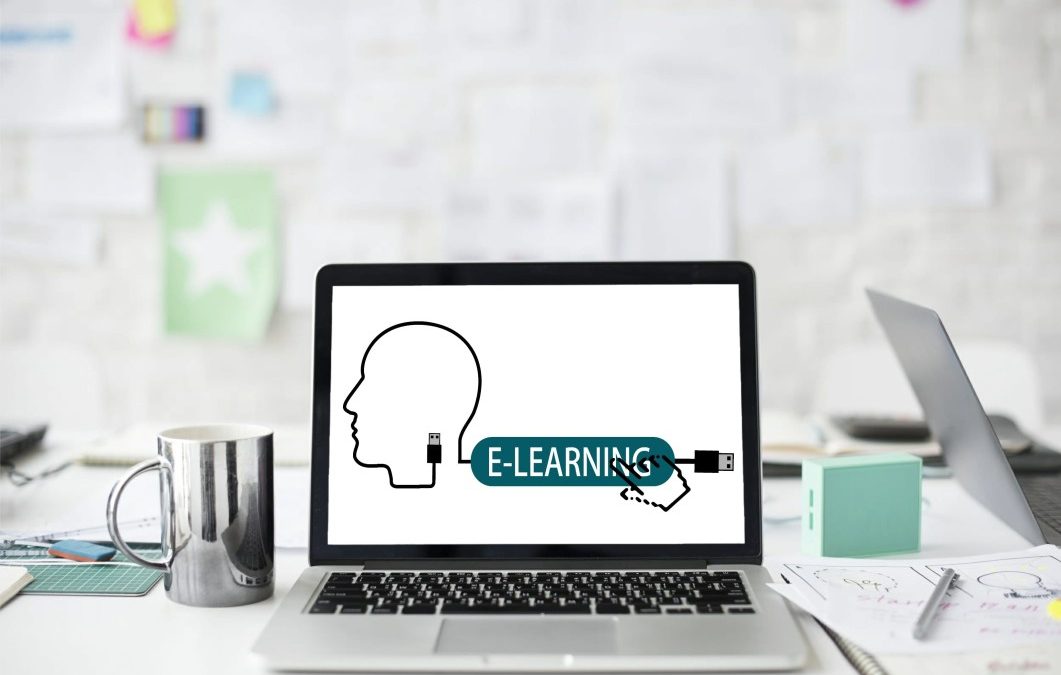Ten years ago, I knew very little about online education. I worked primarily as an author, and a live trainer keynoting at conferences and other in-person events.
Over the last ten years, I’ve been lucky enough to collaborate closely with some of the leading organizations in online and blended learning. They have taught me best practices about high-quality online learning and helped me dispel some of my own myths and preconceived notions. Based on my positive experiences with these providers, and my own company’s work with hundreds of thousands of students in both online and blended environments, I’ve come to see what high-quality online education looks like.
As our world increasingly turns to online education to combat the spread of Coronavirus, I thought it might be helpful to share some of the key lessons I’ve learned by debunking 3 myths that many people have about online education.
Myth #1: It’s not possible to create meaningful relationships online.
Many people think that online education means putting kids in front of a computer for hours, with no meaningful interaction. Nothing could be further from the truth if online education is done correctly. Veteran online educators know that high quality relationship-building is not only possible, but should be the norm and expectation for online education. Here are the reasons:
- Increased Opportunities for 1-1 Connection: Live education has many advantages, but so too does online. For example, many students report that they feel self-conscious raising their hands, or sharing a concern in live classrooms because they are worried what their peers might think. In online education, students can message an educator easily 1-1 to express a concern or share a question. Educators can leverage this opportunity for 1-1 connection by encouraging students to message them directly with questions or concerns and showing them how to do so.
- Prevalence of high-quality video-conferencing tools: We now have many wonderful video-communication tools such as Zoom and Google Hangouts that allow us to communicate in large video settings. I’ve participated in many wonderful sessions with dozens or even 100+ student sharing, learning, and growing together. These video-conferencing tools have many robust, interactive tools that are built into the platform and can be leveraged to drive connection.If we expect that we cannot build strong relationships in online education, we will not. But if we are open to the possibility that we can find new ways to connect with and engage our students, we absolutely can do so.
Myth #2: The only thing online learners need is a device and an internet connection.
Learners of course do need devices and an internet connection, but that is just the starting point. Even with strong content, effective online education requires support from parents and educators for maximum impact.
- Parents: Parents can create structures and routines that greatly aid online learning. For example: 1) Creating a set schedule for online learning is critical, especially if that time has not been defined explicitly by schools. Otherwise students will just drift through the day and their learning. With my own three kids, my wife and I have created a schedule between 9 and 2 that includes math, reading, writing, and physical education . 2) Creating a set, consistent space for online learning. Having a desk, or a set area creates a rhythm and an expectation that students will be focused on learning. 3) Setting the expectation that students are expected to grow and challenge themselves at a high level; otherwise many students may view a sudden shift to e-learning as an extended spring break or early summer vacation.
(I grew up as a low-income kid, so I would be remiss to say that my points on parent involvement raise many equity-related issues that districts need to address proactively. Some families do not have internet access; some parents are not at home; many students lack computers at home. Districts should tackle these equity challenges head on; for example, some districts are partnering with internet-service providers like Comcast to provide free Internet access, and some districts have distributed tens of thousands of computers to low-income students. I’m proud to say my own district has set up meal distribution options for free-and-reduced lunch students.)
- Educators: Within a school, the best way to help students is to help educators. That’s because in any environment – traditional or online – educators set the tone for learning. If an educator is excited, believes students can grow, and sets a positive tone, that will be the foundation for learning in the online environment. Having a growth mindset for online education means that any educator, regardless of their starting point, believes that they can become a stronger online educator by learning from others, being willing to make mistakes, and open to trying new methods and techniques.Online education is no different than traditional education in that adults, primarily educators and parents, set the context and culture for student learning. More broadly, there are also strong parallels between our students and the millions of employees that now find themselves working remotely for the first time. For those employees, they will deliver much more value to their employer if they: 1) have a set schedule and place for work 2) have supportive bosses and an overall positive context for their work 3) are willing to harness and leverage emerging communication tools such as Zoom.
Myth #3: Online education is rote.
When they think of online education, many people think of students clicking mindlessly through PowerPoints, scanning endless PDFs, and submitting easy multiple choice assessments that do not stimulate higher order thinking. Again, nothing could be further from the truth for high quality online education.
We have to remember our purpose. We are not putting millions of students in e-learning just to do e-learning. Education is the greatest source of empowerment in the world and even with the current crisis our students are counting on us to deliver. As I always told my team, we are not trying to create classes, we are trying to change student lives.
Here are some ways to create rich, engaging learning opportunities for students in the online environment:
- Vary Assessments: We can engage students and deepen learning by varying assessment types and also giving students choice at least some of the time. For example, we can let a student choose between writing and drawing their response. Or taking a picture on their phone and uploading. Or creating a Google Presentation. Or a video. Or an audio recording. During this current crisis, we as adults are expected to leverage technology to do our jobs remotely. By including varied assessments that leverage technology, we are preparing students for a workforce that will increasingly require them to leverage technology.
- Engage First: Just like with traditional education, a great way to engage students is to start every online lesson with some sort of hook that shows relevance or raises student interest. It takes more time to create these hooks, but the payoff is worth it for student engagement throughout the lesson. For example, Mawi Learning focuses on Social Emotional Learning (SEL), and we often pose a challenging scenario upfront. For example, a student is struggling with social anxiety. What small steps can that student take to move forward that next week? I still remember a hook my high school trigonometry teacher used, where he showed us how ellipses could be used to guide lasers that destroy kidney stones. I don’t remember the formula for an ellipse, but I still remember that hook and how the foci in the ellipse are the key! For hooks, my favorites include scenarios, stories, shocking facts, and videos.
- Jump in there, Parents! Parents, you can also find ways to engage students. For example, my son loves playing games on our PC. As part of his online learning, I asked him to complete a Google presentation on the best gaming laptops on the market, and in the process he will learn what terms such as CPU, RAM, and graphics cards are. He is very engaged because he is working in an area of passion. What is your child passionate about? How can you leverage your student’s passions to engage your student and deepen learning?
Our world is suffering through an unpredictable and overwhelming crisis right now. During this difficult time, we have an opportunity to stretch, grow, and innovate on behalf of our students. Over the last ten years, I’ve been lucky enough to partner closely with industry leaders such as Florida Virtual School (FLVS) that have helped me dispel myths about online and blended learning. I’ve seen firsthand how FLVS educates over 200,000 students a year online and gets phenomenal results based on standardized tests and efficacy studies. In the blended arena, I’ve seen firsthand how innovative districts such as our partners at Miami Dade are leveraging technology to achieve at ever-higher levels on NAEP and other measures.
I believe that online and blended learning, like any other type of learning, is what we make of it. If we continue to believe that all students can grow, prioritize student engagement and voice, and invite all stakeholders to help contribute, we can innovate and continue to provide students with the world-class education they deserve.


